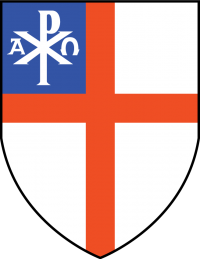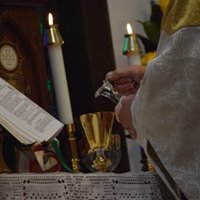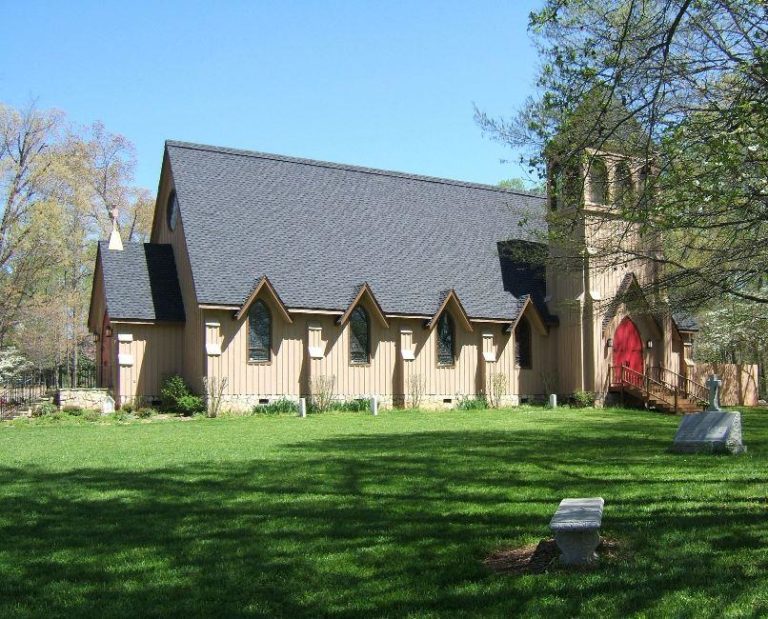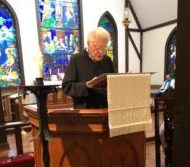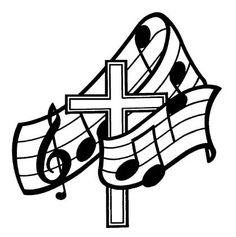Confirmation Adult Manuel 2019 volume 9 or 10
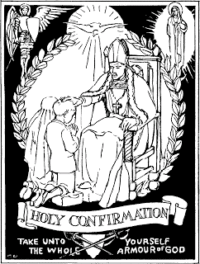
Ministers of the Church:
Laity & Holy Orders;
Who are the ministers of the Church? The ministers of the Church are lay persons, bishops, priests and deacons.
What is the ministry of the laity? The ministry of the laity is to represent Christ and his Church; to bear witness to him wherever they may be; and according to the gifts given them, to carry on Christ’s work of reconciliation in the world; and to take their place in the life, worship, and governance of the Church.
What is the ministry of the bishop? The ministry of the bishop is to represent Christ and his Church, particularly as apostle, chief priest, and pastor of a diocese; to guard the faith, unity, and discipline of the whole Church; to proclaim the Word of God; to act in Christ’s name for the reconciliation of the world and the building up of the Church; and to ordain others to continue Christ’s ministry.
What is the ministry of a priest? The ministry of a priest is to represent Christ and his Church, particularly as pastor to the people; to share with the bishop in the overseeing of the Church; to proclaim the Gospel; to administer the sacraments; and to bless and declare pardon in the name of God.
What is the ministry of a deacon? The ministry of a deacon is to represent Christ and his Church, particularly as a servant to those in need; and to assist bishops and priests in the proclamation of the Gospel and the administration of the sacraments.
Each of us is called according to our specific gifts to ministry and all are needed. Please examine The Ministration of Holy Baptism (page 273 – 1928 Book of Common Prayer), The Form of Ordaining or Consecrating a Bishop (page 549); The Form and Manner of Ordering Priests (536); The Form and Manner of Making Deacons (page 530) to see the specific duties and responsibilities called upon by each order. While the various orders are designed to carry out particular functions, all are mutually dependent on the other for support and encouragement. Each order has some peculiarities of interest which include but are not limited to these notes. Here are some things to know:
Bishops are selected by the diocese in which they preside. The man chosen is elected by both clergy and laity to serve as “chief priest and pastor.” The bishop is in “apostolic succession” by the “laying on of hands” upon them by other Bishops of valid ordinations and they carry on the teaching and work of the twelve appointed by Jesus himself. They represent the continuity of the Church’s understanding and authority as handed down generation to generation from the beginning.
“Because of this, because faith is not something thought up by the individual but by something that comes to us from the outside, its word cannot be treated and exchanged as we please; it is always foreordained, always ahead of our thinking. The positivity of what comes toward us is from outside (me,) opening up what I cannot give myself, typifies the process of belief or faith. Therefore, here the fore-given word takes precedence over thought, so that it is not the thought that creates its own words but the given word that points the way to the thinking that understands. Philosophy is by its nature the work of solitary individual, who ponders as an individual on truth; Faith, on the other hand, is first of all a call to community, to unity of mind through the unity of word. It aims at establishing unity of mind through the unity of the word. Only secondarily will it open the way for each individual’s private venture in search of truth.”
When chosen, a bishop must also be ratified by a majority of the other dioceses. For Consecration, at least three bishops are present to lay hands on the new bishop.
A bishop who is the head of a diocese is called a Diocesan. There may be one or more other bishops who share the ministry of episcopal oversight in a given diocese. They may be either a Coadjutor who succeeds the current bishop upon retirement or a Suffragan who does not. All share fully in the duties and responsibilities of a bishop but may vary in the specific tasks assigned to them. All bishops share the overall governance of the Church alongside the clergy and laity elected to be representatives at the General Convention.
Priests generally serve the Church on a parish level although there are specialized ministries in which priests engage. Priests preside at the Eucharist, baptize, preach, teach, bless, and support lay persons in their daily lives and ministry. Chosen by the Church, normally educated in a seminary experience and called to ministry through the processes outlined in each diocese, priests are ordained by the bishop who is their pastor and to whom they are accountable for the up-building of the Church. They share in the governance of a diocese at annual conventions and may be elected to represent the diocese at General Convention. Priests who serve a parish have a variety of roles and titles. The rector of a parish is responsible for the spiritual life of the faith community and works in conjunction with the vestry to secure the proper maintenance and growth of the parish. The rector may choose also to call other priests to serve the parish. Unlike the selection of a rector which involves the input and discernment of the leaders in the parish, assisting clergy may be chosen by the rector alone. The bishop has the authority to screen potential candidates for any role in ministry and all clergy are under episcopal supervision. The head of a mission is called vicar not rector.
Deacons are ordained ministers within the church. Their role is to represent the world to the Church and to represent the Church in the world. Their involvement among the “least of these” does not relieve the laity of their responsibility for seeing that justice prevails, but deacons remain vigilant in advocating for those who have no voice in the world or in the Church. Each priest is ordained a deacon prior to ordination as a priest, thus this is normally a transitional role (although also have a Perpetual Deacon status.)
Selection, training, and deployment for deacons vary from diocese to diocese. In addition to the functions of servant ministry and advocacy, deacons have liturgical duties designed to remind the worshipping committee of its own responsibility in the world. Deacons typically read the gospel, lead the prayers of the people, set the table, and dismiss the congregation. They take their place in the ministry of a parish but are there by the specific assignment of the bishop to whom they report. These assignments are periodically evaluated and may be altered by the bishop’s authority.
Deaconess:
Laity of the Church provides invaluable resources for all ministries both to the Church and in the world. Lay persons are needed for “Church work” and the “work of the Church.” A variety of tasks—from altar guild to teaching to pastoral care to fellowship to gardening to choir to cooking to cleaning to fund raising and on and on—depend entirely on the labor and skills of the members of the church. Both formally through election to the vestry and informally, the life and growth of the Church is maintained by the laity. The gifts of time, talent, and money are essential to keep the Church alive and are freely given by the lay members of every congregation, parish, diocese, and province. All give to the mission and ministry of the Church which is one of the few institutions that exists primarily for those who do not belong to it!
The laity also contributes to the governance of the body. On the parish level, persons are elected at an annual meeting to serve on the vestry. The various duties of the vestry include the maintenance and management of the temporal matters of the parish as well as the calling of the rector (working in conjunction with their Bishop.) On the diocesan level, representatives chosen by the parish attend the annual convention of the diocese. All share in the legislative responsibilities of diocesan work.
The work of the diocese is coordinated by an annual convention that elects clergy and lay people to serve on Diocesan Council. The convention adopts a budget and program each year and the Council administers them. In addition, a bishop has a body called a Standing Committee that is elected in a similar fashion to serve as an executive advisory council. In these ways, the clergy of a diocese work with the bishop and the laity to insure the proper functioning of the mission and ministry of the Church on this level. Every three years representatives will be chosen and sent to the General Convention and will perform the same function on a national level.
The Church Building and Year:
The church building – why do you think ours looks the way it does. Most churches look a certain way because people use them in certain ways. Seeing how people use churches will help you understand why they look the way they do; as well, we will discuss how we are supposed to act when inside.
St. Michael the Archangel is shaped like a cross.
The Narthex
The entrance hall is called the narthex. This is an old Latin word meaning “foyer” or “porch”. When in the entrance hall (The Narthex) we should keep our voices low as others inside are praying…silence is golden!
The Nave
The long portion where you sit during most of the service is called the nave. This word comes from the Latin word meaning “ship”, because the roof of the church when you look up looks like the hull of a ship when you look down. If you can’t imagine that, look at the roof. The shape of the roof reminded early Christians of Noah’s ark, which God used to save Noah from the flood. In the nave we all “row” in the same direction – towards Jesus Christ our Lord.
The Transept
At a right angle to the nave is the transept. This word is Latin, too: it means “divider”. As you can see, the transept divides the building by cutting right across it. It also marks another division in a church building: on one side of it sit the people who come to worship, and on the other side sit people who have special jobs to do during the worship. Each of these people has his own place to sit, stand and kneel. Starting from the transept, let us walk east and see what we find.
The Chancel
This word also comes from the Latin, meaning “boundary”. In ancient times this marked the dividing line between the places that the clergy occupied and those occupied by the lay people.
In some churches when one first enters they the choir. If your church doesn’t have a choir here, it is probably in the back up in a balcony (as is St. Michael the Archangel.) Sometimes, if there are several clergy present at a service, many of them sit here.
The Sanctuary
Just east of the chancel is the sanctuary. “Sanctuary” is not another name for the church building, but is a name for only this part of the church where holy things happen and holy things are kept. In the middle of the sanctuary stands the altar where prayers, bread and wine are offered.
The floor is called the pavement. The three steps leading up to the altar are supposed to remind us of the Trinity, and the little hill they make is supposed to remind us of Calvary, the hill on which Jesus died.
In most churches, a communion rail runs along the line of the sanctuary. It is where the clergy serve the people, giving them communion. The rails were originally built to keep dogs off the altar cloths (!) and were called altar rails. Later, people decided that thy made a convenient place to kneel for receiving communion, and called them communion rails.
East
As discussed earlier, The Church faces east. Some common reasons for this are: when you walked in the door, you walked into the back of the church building. There are two reasons why churches face east. Since most Christian worship services happen in the morning, the congregation can face the rising sun and see what they are doing. The morning sunlight also reminded the early Christians of the Resurrection and of Jesus Christ, who is “Light from Light, God of God”. For this reason, even churches in India and China face east. Even if a church faces another direction, the altar or sanctuary wall should always called the “east wall”.
Gospel and Epistle sides
At the north side of the sanctuary or the transept, which is to your left as you face east (the Altar,) and where the Gospel is read. When the Church was busy taking the Gospel into Europe, it took a northerly route. The position of the deacon reading the Gospel was supposed to remind worshippers of the Church’s missionary calling. In many churches the Gospel is read from the middle of the congregation in the nave. This position means the same thing: taking the Gospel to people. The Epistle is read on the south side, which is to your right as you face east. From these two actions the sides of the altar and of the nave are called the Gospel and Epistle sides.
The Pulpit
The pulpit is where the preacher stands and preaches the Gospel. It may be placed on either side where the preacher’s voice can best be heard. It is elevated in order that all can see.
Sacrament lamp
You will notice a candle hanging from the ceiling or fixed to the wall in the sanctuary. It is called a sanctuary candle, from its location; or a sacrament lamp because the Blessed Sacrament is reserved (stored) nearby. It is lighted only when the Blessed Sacrament is present. This is a reminder to all who enter the church that Jesus is present in the Sacrament.
The Tabernacle
The reserved Sacrament is kept in a tabernacle. After God had led the Israelites out of Egypt, they built a tent where they could worship him on their travels through the desert. The most holy or inner room of this tent was called the Tabernacle. It reminded them of God’s presence. The tabernacle in a church is a locked box behind the altar. From it, the priest may remove the Sacrament to be taken to the sick or others who cannot come to church to make their communions. If you enter a church and there is a lighted sacrament lamp, it means that the Sacrament is reserved there. In that case, you are supposed to genuflect (kneel quickly on your right knee). If there is no sacrament lamp, simply bow your head to the altar as the place of sacrifice. A box called an aumbrey may be mounted in a wall which also may be used for the reserved sacrament or for holy oils.
The Stations
You may find small pictures on the walls that show scenes of the suffering and death of Jesus. The pictures are called the Stations of the Cross. People move from picture to picture, hear or read the Bible account of his suffering, and singing hymns. Each picture is a little reminder of one part of his sufferings for us. Walking from picture to picture is an imitation of the walk he made to his death. Many people see this as a spiritual pilgrimage to Jerusalem.
The Church Year
At different times of the year the church building is decorated in different ways. Each of these decorations means something. Throughout the year we hear about different events in our Lord’s ministry. He did so many things that, if they were all written down, would fill many books, St. John tells us. The Church tells us the story of Jesus’ life and work once every year by dividing the year into seasons. This way of telling the story of Jesus is called the Church calendar. Each season has its own mood, based on what Jesus did for us in the events we learn about. Each has its own color, which helps us to have the right attitude when we pray. The seasons are Advent, Christmas, Epiphany, Lent, Easter, Whitsuntide and Trinitytide.
Advent
During Advent, we look forward to our Lord’s coming (both His birth and second Coming.) The color is purple and the somber mood is one of careful preparation. During Advent, no flowers are in the church: flowers are saved for joyful days.
Christmas
During Christmas, we celebrate the birth of Jesus, God on earth. The color is white or gold and the mood is one of joy. Celebrations are often “high mass” and celebration is a good description of the theme and the service.
Epiphany
During Epiphany, we hear of the events by which our Lord showed his glory to all people. The story of the Wise Men demonstrates the showing of the Christ to the Gentiles. The color is green and the mood is one of thanksgiving.
Lent
A Gesima season leads us from Epiphany to Lent. During Lent, we learn of our Lord’s suffering and the sacrifices he made for us. Lent begins on Ash Wednesday when we humble ourselves to kneel and receive the application of ashes from the burning of last year’s palms. At the end of Lent, on Good Friday, we learn about his sacrifice of himself on the Cross. The color is purple and the mood is one of penitence or sorrow for our sins and for his death. Because Lent is a time to be sorry for sins, no flowers appear in the church. Lent is preceded by three Sundays of Pre-Lent, when we get ready for our Lenten struggle.
Easter
During Easter, we give thanks for our Lord’s resurrection and the new life he gives us. The color is white and the mood is of joy and celebration.
Whitsuntide or Pentecost
During Whitsuntide, we give thanks for the giving of the Holy Spirit to the Church. The color is red, which stands for fire (remember the Holy Spirit appeared to the apostles as flames, or tongues, of fire.) The mood is of awe and wonder.
Trinitytide
During the rest of the year, we learn about God through the Gospel accounts of Jesus’ life and work. The color is green, symbolizing the growth of his new life in us. The mood is hope as we strive to place Jesus at the center of our lives.
Saints’ days
Throughout the year, the Church devotes special days to give thanks for its saints, or holy people, who have pleased God. These days are often called saints’ days. Some have the color white, which reminds us of Christ’s light shining in them. If the saint died for Christ, the church is decorated in red, to remind us of the saint’s blood and the fire of the Holy Spirit, who helped the saint to witness in death.
So briefly, what happened during the “dark ages”
Overview 1000 A.D. through the Reformation:
From about AD 1000, the Church had spread throughout most of Western Europe. There was a church building that people could use in just about every city, and the Church had more priests than ever. The Church also had monks and nuns, men and women who promised not to marry and to remain poor just like Jesus had done. Most monks lived together in communities, where they did special work for the Lord, as did nuns. Some taught in schools, some made the many items used in Christian worship services. Some worked in hospitals. Some moved to far-off places to preach the Gospel. All of them said their prayers. Although nuns didn’t preach, many gave advice to kings, priests and ordinary people alike. The monks’ communities, called monasteries, collected and saved priceless books and manuscripts from pagan raiders during this period, and with that store of knowledge became the earliest universities.
Because the Church had grown so big, it became difficult to manage. Gradually, the Bishop of Rome emerged as the most powerful. Many of these bishops used the title “Pope”, from the old Latin word papa meaning “father”. Usually he was very helpful in organizing the Church and sending missionaries to far-off lands. But he could not guarantee that missionaries and priests could preach the Gospel. The Church needed a great many workers, and began ordaining large numbers of men to the priesthood who didn’t know very much about the Gospel. Many greedy men used to buy and sell Church jobs because they paid well. Even some of the popes did this.
Reformation period
By the year 1500, the Church was bigger than ever. About a fourth of the people in Europe who worked for a living worked for the Church. Almost all aid to the sick, the homeless and prisoners was given by the Church. Because so many people had their job in the Church, very few people thought is was necessary to understand the Gospel. Many took the Gospel for granted and no longer tried hard to live by it. And because the Church preached the Gospel in Latin, fewer and fewer people understood it. Most people didn’t even bother to learn the Lord’s Prayer, the Creed and the Ten Commandments in a language they couldn’t understand. Some even paid priests to say their prayers for them.
People began to believe that anybody could get to heaven by doing enough good deeds. The Church was sick, but no one could figure out what to do about it. Some people thought another Ecumenical Council could save it. Others thought that only kings had enough power to make the people understand the Gospel again. Still others thought the Pope should punish wrongdoing in the Church and teach the people.
In 1519, a German monk named Martin Luther tried to change the Church for the better. He nailed a list of 95 complaints to a church door in Wittenberg. Each of them told one thing that was wrong with the Church that he wanted to fix. This event began a period of history when many people tried to change, or “reform”, the Church. Luther was later told by the Pope not to complain anymore, but he would not stay quiet. Christians from all over Europe began to protest. They were tired of Latin services. They wanted to pray in their own language. They were also tired of following all the Roman rules about saying prayers. They also taught that Jesus’ good deeds and his death were enough to take away people’s sins.
Soon, Luther and others like him would leave the Church and begin their own societies. For them, it was more important to be right than to remain together in a sinful Church. These societies formed in every country in Europe. Because they did not want to be under the Pope’s control, they started churches without bishops or priests. They called themselves Protestants since they were protesting the greed and false teaching they found in the Church. For the next 150 years, Europeans of different churches would fight wars with one another. Christians in every European country saw the Reformation tear their churches apart.
In England, the Reformation was different from any other country. The English Christians did not allow just anyone to leave the Church and start a new one. When King Henry VIII got into an argument with the Pope over marriage, he decided that he did not want foreigners taking money out of England and giving it to the Pope in Rome. He made sure that English money was spent on English Christians. The Pope became very angry.
Henry also allowed English Christians to read the Bible in a language they could understand, but the worship services remained in Latin. Because people could not say their prayers in English, the services remained very complicated and impossible for most people to understand. The services were different in different parts of the country, and many priests did not understand the language when they read the Latin prayers in church. Henry made sure the Church kept her bishops, priests and deacons. He would not allow anyone to leave the Church to start new congregations because he did not want any conflict.
When Henry died, his son Edward VI became king in 1536. He commissioned a bishop named Thomas Cranmer to translate the Latin worship services of the Church into English. Cranmer gathered services from several different Latin service books called manuals into one single book called The Book of Common Prayer, printed in 1549. For the first time, English Christians could say their prayers in a language they could understand. The Book of Common Prayer, or Prayer Book for short, is still the book used by all traditional Anglicans when they worship together.
Before the Prayer Book, going to church was different from what we do today. When English Christians used to go to Church, they saw many pictures about the life of Jesus and the saints, and heard beautiful music. The priest wore colorful vestments and burned incense, which made the drafty stone churches smell beautiful. Church for them was a great source of entertainment. Most Christians had very little understanding of the prayers being said, but they felt like they were in God’s house. They felt like children who have to be on good behavior in a room full of adults. Edward and the bishops decided that while the people were saying English prayers, all of these entertainments had become distractions. Many people pulled down statues in the churches and painted over the pictures. Except in very big city churches, no music was heard. Colorful clothing was outlawed. The sermon became people’s entertainment and some could be two hours long!
Some people in England wanted more changes in the way they worshipped. They did not agree that Christ had given the apostles a certain job as pastors and that the bishops were supposed to be pastors in their place. Some of these people were called Puritans because they wanted, in their minds, to “purify” the Church, or “clean it up”. Those who wanted the Church to keep bishops were called Episcopalians, from the Latin word for bishop. In England in the 1640’s, many Puritans and others declared and won a civil war, and actually outlawed the Church for a generation. Several Church people lost their homes, their jobs and even their lives. These faithful Christians were patient and suffered much until the Church was restored again in 1661.
Confirmation Adult Manual Chapter 1 of 10
https://www.stmichaelsanglican.org/2019/03/05/confirmation-adult-manuel-2019-part-1-of-10/
Confirmation Adult Manual Chapter 2 of 10
https://www.stmichaelsanglican.org/2019/03/05/confirmation-manuel-blog-edition-2019-part-2-of-10/
Confirmation Adult Manual Chapter 3 or 10
https://www.stmichaelsanglican.org/2019/03/12/confirmation-adult-manuel-2019-volume-3-of-10/
Confirmation Adult Manual Chapter 4 of 10
https://www.stmichaelsanglican.org/2019/03/12/confirmation-adult-manuel-2019-edition-4-of-10/
Confirmation Adult Manual Chapter 5 of 10
https://www.stmichaelsanglican.org/2019/03/12/confirmation-adult-manuel-2019-volume-5-of-10/
Confirmation Adult Manual Chapter 6 of 10
https://www.stmichaelsanglican.org/2019/03/15/confirmation-adult-manual-2019-6-of-10/
Confirmation Adult Manual Chapter 7 of 10
https://www.stmichaelsanglican.org/2019/03/15/confirmation-adult-manual-2019-volume-7-of-10/
Confirmation Adult Manual Chapter 8 of 10
https://www.stmichaelsanglican.org/2019/03/19/confirmation-adult-manual-2019-volume-8-of-10/
Confirmation Adult Manual Chapter 9 of 10
https://www.stmichaelsanglican.org/2019/03/22/confirmation-adult-manuel-2019-volume-9-or-10/
Confirmation Adult Manual Chapter 10 of 10
https://www.stmichaelsanglican.org/2019/03/22/confirmation-adult-manual-2019-volume-10-of-10/
